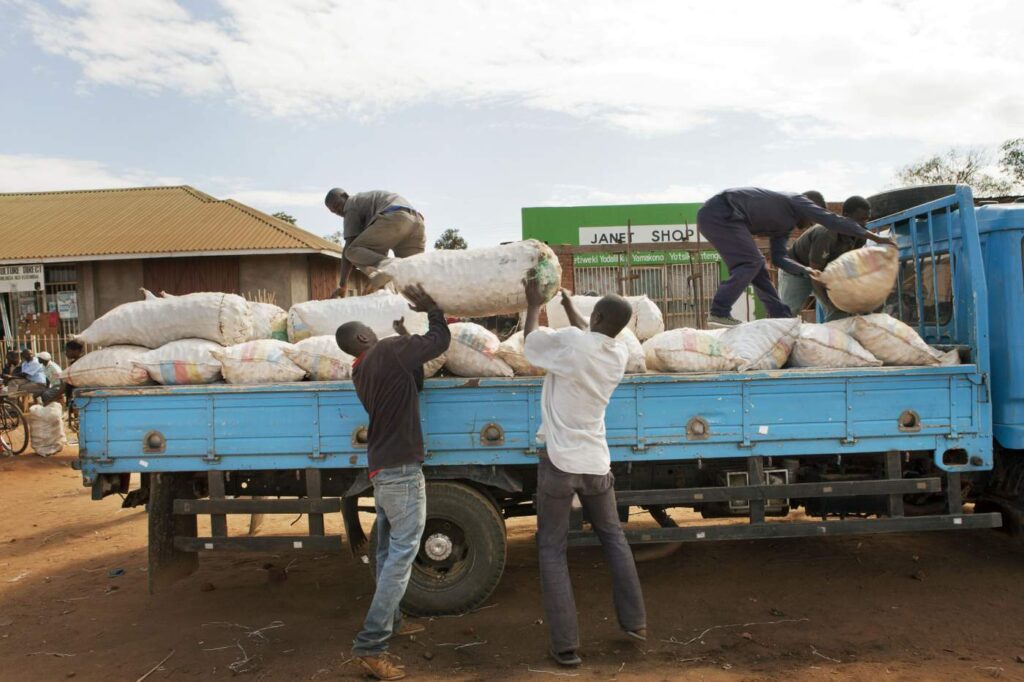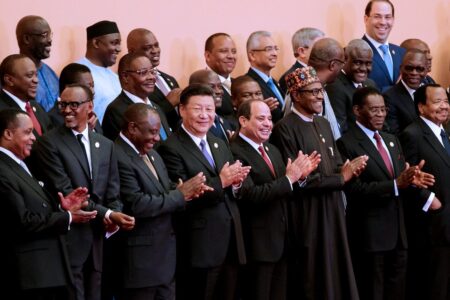Kenya’s economic growth in recent years has led to a reduction in poverty according to the World Bank but these gains could be lost due to the Covid-19 pandemic.
The Bretton Woods institution notes that the poverty headcount rate declined from 43.7 per cent in 2006 to 36.8 per cent in 2015. The bank’s latest data shows that Kenya’s GDP growth was 1.9 percentage points higher than the Sub-Saharan African countries’ average of 3.8 per cent between 2013 and 2018.
However, GDP growth has plummeted to a projected 1.5 per cent this year as the pandemic threatens to derail progress in poverty reduction.
Read: Africa’s Next War – How water will determine continental security
Hailed as East Africa’s investment hub, Kenya’s economy is largely driven by the informal sector with Small and Medium Enterprises (SMEs) contributing a sizeable percentage to the country’s GDP.
According to The International Trade Centre (ITC), SMEs employ more than 80 per cent of the working population in Kenya playing a central role in its economic and growth strategies. With such a contribution to growing the East African economy, efforts to make SMEs more competitive should be key in ensuring that they achieve much more than they currently are.
In a report done by ITC in collaboration with the Kenya National Chamber of Commerce and Industry (KNCCI) last year, the SME sector can help Kenya achieve its development objectives by creating more jobs, strengthening other sectors which rely on SMEs and developing business models that work.
Kenya’s long-term development blueprint, Vision 2030, seeks to transform Kenya into an industrialized, high middle-income country. The blueprint recognizes that SMEs play a key role in attaining these goals where these enterprises are the ‘bedrock’ for manufacturing.
The Kenyan economy has flourished with growth hitting 5.9 per cent in 2018 but losing a few points in 2019 to hit 5.7 per cent.
However, this growth has not been acknowledged by those who should be experiencing it the most raising concerns of whether the numbers on paper are commensurate with reality.
Kenya’s Central Bank Governor Dr Patrick Njoroge said last year that households in the country were not experiencing the changes ostensibly brought by the GDP growth. Speaking at an International Monetary Fund regional outlook report launch, Dr Njoroge said that increased infrastructure spending had not spread the wealth among working Kenyans.
The World Bank estimates remain optimistic though showing that the country is one of the fastest-growing economies in Sub-Saharan Africa.
Kenya has a strong educational system, a vibrant private sector and an innovative financial sector but the country’s business confidence is shaky especially with new policies which are taxing businesses more risking closure and the eventual loss of incomes for the majority of Kenyans in the SME sector.
With the Covid-19 pandemic, the country should become innovative to ensure that the sector that is the bedrock of industrialisation remains competitive and attractive to those who would venture into it.
To ensure that SMEs stay afloat during this period and survive the recession, banks have come up with funding to help prop the businesses and cushion them against the negative effects brought about by the virus.
For instance, Kenya’s biggest bank by assets, KCB Bank, has put aside KSh2 billion (Us$2 million) to support thousands of SMEs in one county to help them weather the covid-19 crisis.
In the arrangement, KCB will provide affordable facilities to enterprises and cooperative societies whose businesses have been affected by the outbreak of pandemic while the Laikipia County Government will pay part of the interest while business owners and cooperative societies will pay the balance.
“The interest sharing and guarantee model is one of the innovative ways the bank has developed through a partnership with the county government to facilitate credit to catalyze the business growth of the entrepreneurs and enable economic recovery,” said KCB Group Chief Operating Officer Samuel Makome.
Makome said that small businesses are most at risk from the economic disruption posed by the global pandemic and effects of the containment measures.
SMEs in the county are financed based on their ability to repay the loans based on their cash flows.
The County Government of Laikipia is developing policies and structures to support the utilization and sustainability of the fund and also facilitate capacity building for entrepreneurs.
In addition, the county will assist in getting markets for customers who are in agribusinesses and provide a team that will monitor the customers who have borrowed to ensure that loan repayment funds are not diverted.
The Laikipia County and KCB partnership shows that on a large scale, governments and other stakeholders should find sustainable medium-term solutions for SMEs if their survival is to be guaranteed.
Another initiative to help SMEs survive the pandemic is by Family Bank and Isuzu East Africa.
In this partnership, customers access up to 95 per cent of financing to acquire commercial vehicles they can pay for within 60 months
The partnership enables SMEs in the agribusiness, trade and logistics businesses to purchase Isuzu pickups and trucks conveniently.
Schools and churches will be able to access 100 per cent financing while Public Service Vehicle (PSV) owners can access up to 80 per cent financing.
In the long run, though, short-term relief is not enough especially if concessions are restricted in reach and eligibility.
In addition, solutions enabled by e-commerce platforms and gig work should be encouraged and scaled up to help keep these businesses alive.











